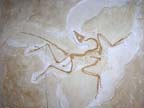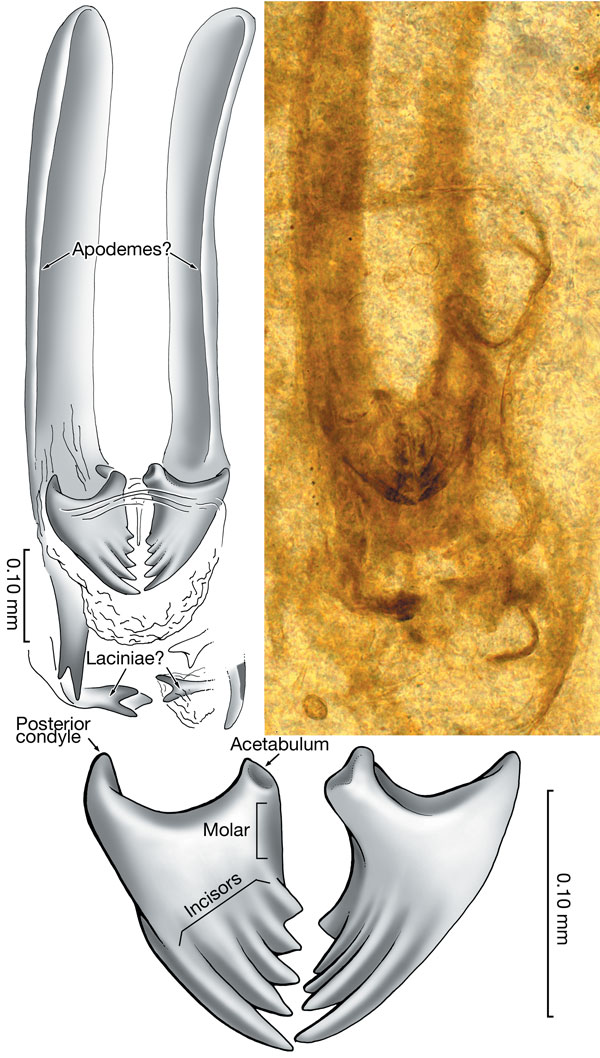 |
 |
 |
 |
 |
Produced
by the Population Genetics and Evolution class, Furman University |
||||
 |
 |
 |
 |
 |
Produced
by the Population Genetics and Evolution class, Furman University |
||||
 |
The
Devonian: Rhyniognatha |
 |
||
| Rhyniognatha
hirsti is considered to be the oldest fossil insect (redOrbit 2004),
20 my older than other insect fossil. This fossil was found in the 1920's,
in the spectacular deposit in Scotland know as the "Rhynie Chert".
Like other fossils in this deposit, the silicaceous chert preserved a
3-D image of the organism (redOrbit). Originally dismissed as largely
unidentifiable (because only the mandibles were clearly visible), a modern
reanalysis by Engel and Grimaldi (2004) suggest that the fossils mandibles
belonged to an insect. Indeed, the short, triangular structure of the
fossilized mandibles resemble those of flying insects (Pterygota), thought
there are no wings in this incomplete fossil. However, the presence of
a winged insect this early suggests that ancestral, flightless insects
would date to a much older age (Engel and Grimaldi 2004). This interpretation
is consistent with the DNA estimate of insect origins around 430 mya (redOrbit
2004); 30 my older than Rhyniognatha hirsti (Engel and Grimaldi
2004). Ancient insects are thought to have eaten sporophylls produced
by early land plants. The early evolution of flight would have correlated
with the evolution of tall plants in the Devonian. Page by Will Towler |
 |
| Fossil photo and diagram of Rhyniognatha hirsti (Engel and Grimaldi 2004). | |
|
RedOrbit. 2004. 400 million years before fly swatters; scientists identify fossil as world’s oldest insect. Accessed Feb 24, 2010. Engel M, Grimaldi D. 2004. New light shed on the oldest insect. Nature. 427 (627-630). Rincon P.2004. Oldest Insect delights experts.BBC News. Accessed Feb 24, 2010]. |